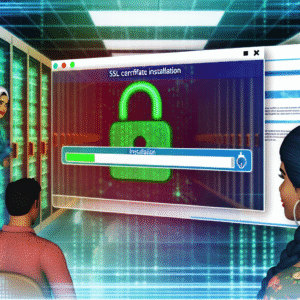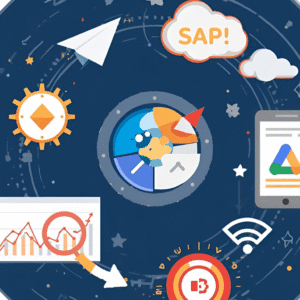In today’s competitive marketplace, customers are no longer content with a “one-size-fits-all” approach. Instead, they’re seeking products and services that feel personal, unique, and tailored to their individual preferences. This shift has given rise to a powerful business strategy: offering customization options. Whether it’s personalizing a coffee order, customizing the color and features of a new car, or tailoring software to specific business processes, customization empowers customers to get exactly what they want—and it helps businesses stand out from the crowd.
This blog post explores why customization matters, how it can enhance your offerings, the benefits for both customers and businesses, and practical strategies to implement it effectively.
1. Why Customization Is No Longer a Luxury—It’s an Expectation
Not too long ago, customization was considered an exclusive perk reserved for high-end products and luxury services. But times have changed. Thanks to technology, automation, and flexible manufacturing methods, even small businesses can offer tailored solutions without breaking the bank.
Here are some reasons why customization is becoming standard:
- Consumer Empowerment: The rise of the internet and mobile apps has given customers unprecedented control over what they buy and how they buy it.
- Individuality Matters: Modern consumers value self-expression. Products and services that reflect their personality or needs carry more emotional weight.
- Technology Simplifies Customization: Tools like 3D printing, AI-driven product design, and automated configuration platforms make personalization scalable and affordable.
- Competitive Advantage: With countless options available, customization helps brands stand out in crowded markets.
A 2022 Deloitte study revealed that 1 in 5 consumers are willing to pay a 20% premium for customized products, proving that personalization doesn’t just delight—it drives revenue.
2. How Customization Enhances Your Product or Service
Offering customization options doesn’t just make your product “nicer”; it transforms the customer experience from a transactional purchase into an engaging collaboration. Here’s how:
a. Creates a Stronger Emotional Connection
When customers actively participate in shaping a product or service, they feel a sense of ownership. This emotional investment increases loyalty and reduces the likelihood of switching to competitors.
Example: Nike’s “Nike By You” program allows customers to choose colors, materials, and even add personal text to sneakers. Each pair becomes a statement piece, not just footwear.
b. Increases Perceived Value
A product designed to fit someone’s exact needs feels inherently more valuable than a generic option. Customers will often pay more for something uniquely theirs.
Example: Starbucks’ drink customization (size, milk type, flavor shots) allows a simple coffee to become a premium, personalized treat.
c. Improves Customer Satisfaction
When products or services match customer expectations perfectly, satisfaction rates soar. Customization reduces the risk of dissatisfaction caused by irrelevant features or missing options.
Example: Software-as-a-Service (SaaS) platforms like HubSpot allow users to customize dashboards, workflows, and integrations to suit specific business goals.
d. Enhances Brand Differentiation
In a market flooded with similar offerings, customization acts as a unique selling point (USP) that sets your brand apart.
Example: M&M’s lets customers order candies with custom colors, messages, and even images—a simple yet memorable differentiator.
3. Benefits of Offering Customization Options
The benefits of customization extend far beyond a single sale. They influence brand perception, customer retention, and operational success.
a. For Customers
- Relevance: Products are more aligned with individual needs and preferences.
- Control: The ability to choose fosters a sense of empowerment.
- Uniqueness: Customized products feel more special and exclusive.
- Satisfaction: The likelihood of buyer’s remorse decreases when the customer designs the product.
b. For Businesses
- Increased Revenue: Customers often pay more for customization.
- Loyalty and Retention: Personalized experiences lead to repeat business.
- Market Insights: Customization data reveals trends and preferences.
- Reduced Returns: Products that meet exact needs are less likely to be returned.
4. Types of Customization to Consider
Customization comes in many forms. Choosing the right type depends on your product, service, and audience.
a. Design Customization
Customers choose the look and feel—colors, materials, patterns, or layouts.
Example: Vans Custom Shoes lets customers design their own patterns and colors.
b. Functional Customization
The product’s features or components are tailored for specific needs.
Example: Dell allows customers to configure laptops with chosen processors, memory, storage, and graphics cards.
c. Service Customization
Adjusting the way a service is delivered, such as timing, format, or approach.
Example: A personal trainer offering custom workout plans based on fitness goals.
d. Modular Customization
Products are built from interchangeable parts or modules that customers can choose from.
Example: IKEA’s modular furniture systems that can be configured to fit different spaces.
e. Personalization Through Data
Using customer data to automatically adapt offerings.
Example: Netflix’s algorithm suggests shows and movies tailored to individual viewing habits.
5. How to Implement Customization in Your Business
Offering customization isn’t just about giving choices—it’s about designing a seamless, enjoyable process. Here’s how to do it effectively:
Step 1: Understand Your Customers
Before offering customization, study your audience:
- What features matter most to them?
- Which pain points could customization solve?
- Are they willing to pay extra for it?
Tools like surveys, focus groups, and purchase history analysis can reveal valuable insights.
Step 2: Start Simple
You don’t have to overhaul your entire product line overnight. Start with a few customization options and expand as demand grows.
Example: A bakery could begin by offering custom cake flavors and designs before adding advanced options like dietary modifications.
Step 3: Make It Easy
A complicated customization process can discourage customers. Use intuitive online configurators, visual previews, or guided choices.
Example: Warby Parker’s glasses selection tool helps customers filter by shape, color, and fit, making the process fast and enjoyable.
Step 4: Set Boundaries
Unlimited customization can overwhelm customers and complicate operations. Offer a curated range of options to balance variety with manageability.
Step 5: Price Strategically
Customization often justifies a higher price—but be transparent. Clearly explain what the extra cost covers (special materials, added labor, unique designs).
Step 6: Promote the Experience
Highlight customization in your marketing. Show examples, share customer stories, and emphasize the benefits of having something unique.
6. Real-World Success Stories of Customization
a. Coca-Cola’s “Share a Coke” Campaign
Coca-Cola replaced its logo with popular names, encouraging customers to “share a Coke” with friends. This simple personalization led to a 2% increase in U.S. sales after more than a decade of decline.
b. Spotify’s “Discover Weekly”
By customizing playlists for each user, Spotify keeps engagement high and churn low. The personalization is so effective that 40% of streams come from these recommendations.
c. Build-A-Bear Workshop
This brand turned customization into an interactive retail experience. Customers choose the bear, stuff it, dress it, and even add a recorded message, creating a memorable emotional connection.
7. Potential Challenges and How to Overcome Them
While customization offers many benefits, it comes with challenges that businesses must address:
- Operational Complexity: More variations mean more logistics.
Solution: Use modular designs and streamlined supply chains. - Higher Costs: Custom materials and labor can add expenses.
Solution: Price customization appropriately and focus on high-margin options. - Decision Fatigue: Too many choices can overwhelm customers.
Solution: Offer guided customization with limited, curated options. - Longer Delivery Times: Custom products may take longer to produce.
Solution: Set realistic timelines and communicate them clearly.
8. The Future of Customization
As technology advances, customization will become even more seamless and accessible:
- AI-driven personalization will predict and suggest options before customers ask.
- 3D printing will enable instant production of unique items.
- Augmented reality (AR) will let customers “try before they buy” virtually.
- Mass customization will combine the efficiency of mass production with the individuality of bespoke design.
Businesses that embrace these trends will not only meet customer expectations but exceed them.
Conclusion
Offering customization options is more than a marketing gimmick—it’s a strategic move that can significantly enhance your product or service. By allowing customers to personalize their purchases, you create stronger emotional connections, boost perceived value, improve satisfaction, and set your brand apart from the competition.
Whether you’re selling physical products, digital solutions, or professional services, customization is your ticket to deeper customer loyalty and sustainable growth. The key is to balance choice with simplicity, ensuring that the customization process is as delightful as the final product.
In an era where individuality reigns, businesses that master personalization will find themselves not just surviving—but thriving—in the marketplace.
Speaking of customization and personalized experiences, you might be interested in exploring the concept of **mass customization**, which refers to tailoring products and services to individual preferences while maintaining efficient manufacturing processes. For a deeper understanding, check out the [Mass Customization](https://en.wikipedia.org/wiki/Mass_customization) article on Wikipedia. Additionally, if you’d like to learn more about how **consumer behavior** influences demand for personalized options, the [Consumer Behavior](https://en.wikipedia.org/wiki/Consumer_behavior) page provides valuable insights. These topics can give you a broader perspective on why embracing customization can be a game-changer for your business.







